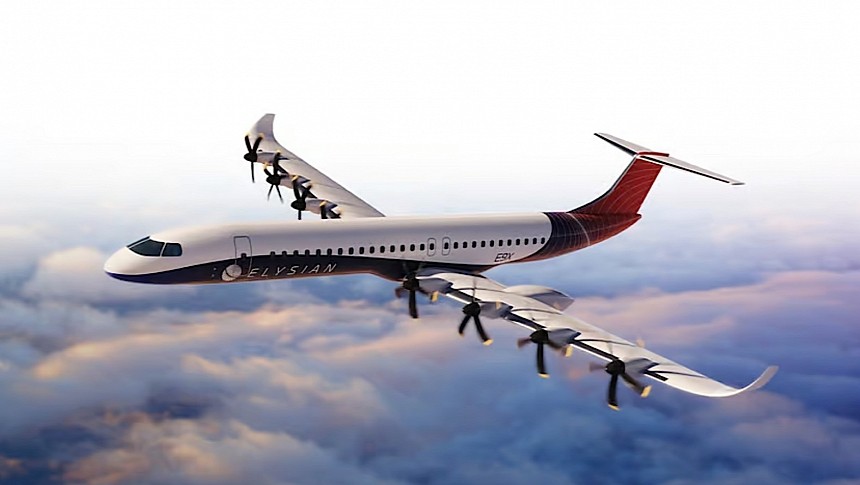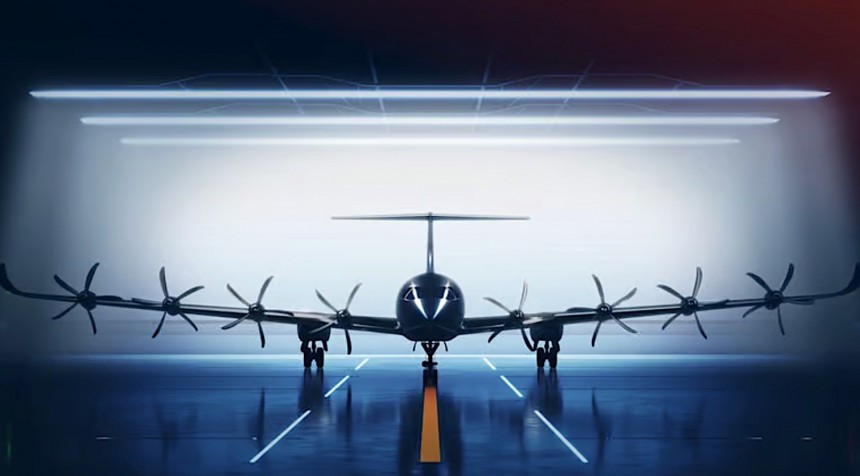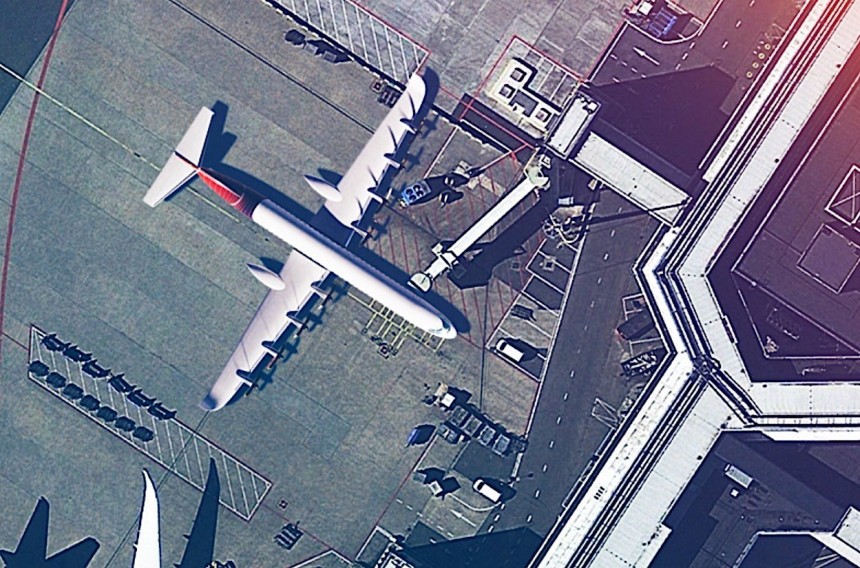The automotive industry is currently enjoying a well-deserved rebirth. After more than a century of doing things pretty much the same way, electric drivetrains are here to reshape everything, from emission levels to the basic design of a car, which has remained unchanged, overall, for years.
The success electric batteries and motors have had in the auto world in such a short time has fueled the dream and imagination of other companies playing the transportation business game. The first to take note was the motorcycle industry, which quickly reacted with an avalanche of startups popping up all over the world.
And then the aviation industry noticed the trend. It too relies on startups to get the electric revolution moving, although some of the major, established players (see Rolls-Royce) are trying their luck as well.
Unlike the automotive industry, where people seem to have settled on batteries and motors, aviation has a number of paths at its disposal on its road to cleaner aircraft operation. Because of the complexities of airplanes and the large fleets currently in operation, a sudden and complete switch to electric power is not possible.
That's why the biggest players are eyeing alternative solutions, the most obvious being a switch to Sustainable Aviation Fuel (SAF) and the less so a complete redesign of jet engines – an avenue researched by several groups, including NASA.
Aviation startups do not have the constraints of larger airplane makers and operators. For them, stepping into this brave new world with an electric aircraft seems like the natural choice. And that's how we end up with wacky designs like those on the E9X: a rather conventional body, but no less than four propellers on each wing.
The aircraft is the idea of a Dutch group called Elysian. Kind of a weird choice of name for a company that takes people to the sky in a metal cylinder. Or should we call it a bold choice?
But I digress. The E9X is a brand-new aircraft, meaning it's not based on an existing platform like we so often see from aviation startups. It was designed from the ground up by the Dutch crew, which also claims lineage to Fokker, the legacy Dutch aircraft maker that closed its doors in the 1990s.
It's meant to conduct flights on regional routes, so it's not exactly a very large plane. What’s special about it is that it will be powered entirely by electricity, and that’s where the huge number of propellers comes in.
You see, just like electric cars and motorcycles need a motor for each of the drive wheels, so do aircraft for propellers. A single motor to spin them all is not feasible, and fewer than eight for this kind of aircraft would not be enough to get the job done.
That's because the aircraft is supposed to fly, with no less than 90 people onboard, for distances of up to 800 kilometers (almost 500 miles). The speed it can reach is not yet known, and neither are details about the power each motor is capable of developing.
What's special about the plane is that it is being designed to use existing batteries, and not some that are yet to be developed. More to the point, batteries with an energy density of 360 Wh/kg should be more than enough to get the job done.
For reference, there are batteries made right now that deliver more than that. The record belongs to one developed by the Chinese Academy of Sciences, which in the summer of last year achieved 711 Wh/kg, more than triple what Tesla batteries presently deliver.
According to Elysian, with such a powertrain on, the aircraft should be five times more efficient per passenger when compared to planes that use SAF and even when stacked against upcoming hydrogen aircraft.
The first flight of the electric passenger aircraft is scheduled for 2033, which is probably a realistic goal when trying to build something like this from scratch. Once this version gets going, a larger one, capable of reaching a distance of 1,000 km (621 miles), should be developed.
Coincidentally, that distance is how much half of all the world's commercial flights cover. The Dutch company did some math and concluded the arrival of the longer-range E9X should shave 20 percent off the global CO2 emissions. Provided, of course, airlines will be on board with it, and buy it in bulk.
Like many such innovative ideas coming from startups, the electric aircraft may never come to be flown in the real world. The company does have the backing of organizations that may ensure its success, including the University of Twente and the Delft University of Technology (TU Delft).
Financial backing is ensured by Panta Holding, a group that does business not only in aviation, but also in real estate and hotels.
And then the aviation industry noticed the trend. It too relies on startups to get the electric revolution moving, although some of the major, established players (see Rolls-Royce) are trying their luck as well.
Unlike the automotive industry, where people seem to have settled on batteries and motors, aviation has a number of paths at its disposal on its road to cleaner aircraft operation. Because of the complexities of airplanes and the large fleets currently in operation, a sudden and complete switch to electric power is not possible.
That's why the biggest players are eyeing alternative solutions, the most obvious being a switch to Sustainable Aviation Fuel (SAF) and the less so a complete redesign of jet engines – an avenue researched by several groups, including NASA.
Aviation startups do not have the constraints of larger airplane makers and operators. For them, stepping into this brave new world with an electric aircraft seems like the natural choice. And that's how we end up with wacky designs like those on the E9X: a rather conventional body, but no less than four propellers on each wing.
The aircraft is the idea of a Dutch group called Elysian. Kind of a weird choice of name for a company that takes people to the sky in a metal cylinder. Or should we call it a bold choice?
It's meant to conduct flights on regional routes, so it's not exactly a very large plane. What’s special about it is that it will be powered entirely by electricity, and that’s where the huge number of propellers comes in.
You see, just like electric cars and motorcycles need a motor for each of the drive wheels, so do aircraft for propellers. A single motor to spin them all is not feasible, and fewer than eight for this kind of aircraft would not be enough to get the job done.
That's because the aircraft is supposed to fly, with no less than 90 people onboard, for distances of up to 800 kilometers (almost 500 miles). The speed it can reach is not yet known, and neither are details about the power each motor is capable of developing.
What's special about the plane is that it is being designed to use existing batteries, and not some that are yet to be developed. More to the point, batteries with an energy density of 360 Wh/kg should be more than enough to get the job done.
For reference, there are batteries made right now that deliver more than that. The record belongs to one developed by the Chinese Academy of Sciences, which in the summer of last year achieved 711 Wh/kg, more than triple what Tesla batteries presently deliver.
The first flight of the electric passenger aircraft is scheduled for 2033, which is probably a realistic goal when trying to build something like this from scratch. Once this version gets going, a larger one, capable of reaching a distance of 1,000 km (621 miles), should be developed.
Coincidentally, that distance is how much half of all the world's commercial flights cover. The Dutch company did some math and concluded the arrival of the longer-range E9X should shave 20 percent off the global CO2 emissions. Provided, of course, airlines will be on board with it, and buy it in bulk.
Like many such innovative ideas coming from startups, the electric aircraft may never come to be flown in the real world. The company does have the backing of organizations that may ensure its success, including the University of Twente and the Delft University of Technology (TU Delft).
Financial backing is ensured by Panta Holding, a group that does business not only in aviation, but also in real estate and hotels.









